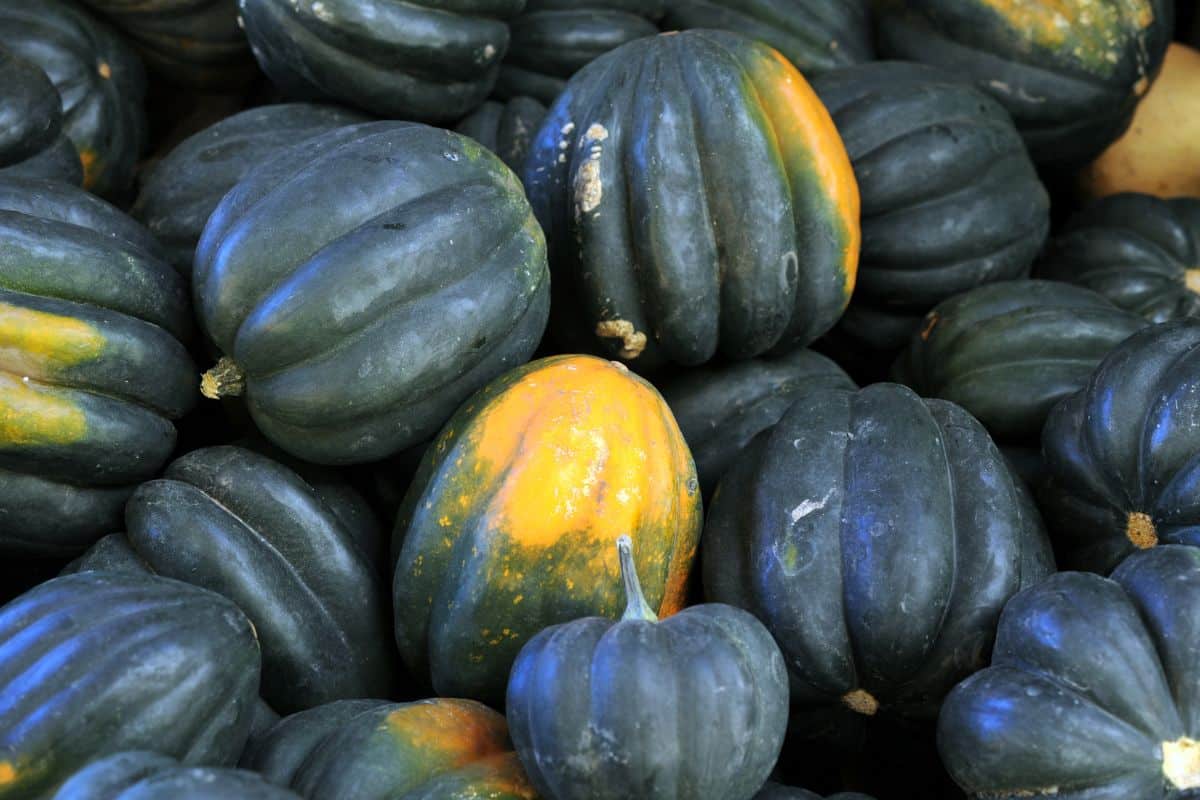Harvesting acorn squash at its peak delivers unmatched flavor and texture. This popular winter squash transforms from bland to sublime when picked at just the right moment. Understanding the perfect timing requires attention to specific visual cues and seasonal patterns that experienced gardeners recognize.
Identifying the perfect harvest time for acorn squash
The journey from seed to table for acorn squash typically spans 80-100 days, depending on growing conditions. Unlike summer squash varieties that are harvested young, acorn squash needs time to develop its characteristic sweet, nutty flavor and dense texture.
The most reliable indicator of ripeness is the squash’s color. A mature acorn squash displays dark green skin with a distinctive orange spot where it rested on the ground. This orange patch should be vibrant and well-defined, not pale or yellowish, which would indicate immaturity.
Another essential visual cue is the stem. The stem connecting the squash to the vine should appear brown and dry, not green and pliable. When the stem hardens and begins to crack slightly near the fruit, your acorn squash is sending a clear signal that it’s ready for harvest.
Weight and firmness also provide valuable clues. A ripe acorn squash feels surprisingly heavy for its size and offers solid resistance when pressed with your thumb. If there’s any give or softness, particularly around the blossom end, allow more ripening time on the vine.
Most gardeners find that late September through October provides the ideal harvest window in temperate climates. This timing allows the fruit to benefit from late summer heat while avoiding the damage of early frosts.
Visual and tactile signs your acorn squash is ready
The skin texture of perfectly ripe acorn squash provides unmistakable feedback to the attentive gardener. The glossy sheen of young fruit transitions to a slightly dull, matte finish at peak ripeness. This subtle change indicates that the protective coating has fully developed.
Examine the characteristic ridges that give acorn squash its distinctive appearance. These ridges should feel firm and well-defined under your fingers, with no soft spots or indentations that might suggest decay or uneven development.
The sound test offers another reliable method for determining ripeness. Gently tap the squash with your knuckles – a ripe specimen produces a hollow, wooden sound rather than a dull thud. This acoustic feedback reveals the density of the flesh and development of the seed cavity.
Pay close attention to the skin coloration pattern. While predominantly dark green, perfectly ripe acorn squash often develops subtle orange streaks between its ridges. These streaks, combined with the ground spot, signal that sugar development has peaked.
Consider these additional harvest indicators:
- Stem appearance: corky, brown, and beginning to shrivel
- Skin hardness: resistant to puncture from a fingernail
- Size uniformity: consistent 4-7 inch diameter across fruits
- Vine condition: beginning to yellow and decline
Timing considerations for optimal flavor development
The science behind acorn squash flavor development reveals fascinating insights. These winter squashes accumulate sugars and develop their characteristic nuttiness primarily during the final weeks before full maturity. Harvesting too early dramatically reduces both sweetness and nutritional content, particularly vitamin A and beneficial carotenoids.
Weather patterns significantly influence optimal harvest timing. Ideally, acorn squash benefits from several weeks of warm days (65-75°F) and cool nights (45-55°F) before harvest. This temperature fluctuation triggers the biochemical processes that convert starches to sugars, enhancing flavor complexity.
First frost considerations require careful balance. While light frosts won’t damage mature fruit still on the vine, they can signal the plant to accelerate final ripening. However, hard freezes (below 28°F) damage cell structures, reducing both flavor and storage potential. Many gardeners harvest just before the first hard freeze forecast.
Regional differences influence timing strategies. In northern climates, gardeners may need to prioritize maturity indicators over perfect flavor development, harvesting slightly earlier to avoid frost damage. Southern growers enjoy extended seasons that allow for maximum flavor concentration on the vine.
For those planning Thanksgiving vegetarian casseroles, timing your acorn squash harvest about 2-3 weeks before the holiday provides optimal flavor after proper curing. This practice ensures your harvest reaches peak sweetness for seasonal recipes.
Storage techniques to enhance flavor after harvest
Proper curing transforms good acorn squash into exceptional culinary ingredients. After harvesting with at least an inch of stem attached, place squash in a warm (80-85°F), well-ventilated area for 10-14 days. This curing process allows skin to harden fully and sugars to develop more completely, enhancing both flavor and storage potential.
Long-term storage requires different conditions than curing. After the curing period, transfer squash to a cool (50-55°F), moderately humid (50-70%) location with good air circulation. Unlike colorful Chioggia beets that require refrigeration, properly stored acorn squash maintains quality for 1-3 months at room temperature.
Monitor stored squash regularly for any signs of softening or decay, removing affected fruits immediately. Even small blemishes can spread rapidly through stored produce. The stem end particularly deserves attention as it often shows the first signs of deterioration.
Strategic harvesting can extend your enjoyment period. By picking some squash slightly earlier and others at peak ripeness, you create a natural succession of use. Early-harvested fruits should be consumed first, while perfectly ripe specimens can be stored for winter meal planning.
Flavor actually intensifies during the first few weeks of storage as complex carbohydrates continue breaking down into simpler sugars. Many chefs and experienced gardeners prefer acorn squash that has rested for 2-3 weeks after harvest before preparation, finding the flavor more developed and the texture more consistent when cooked.

